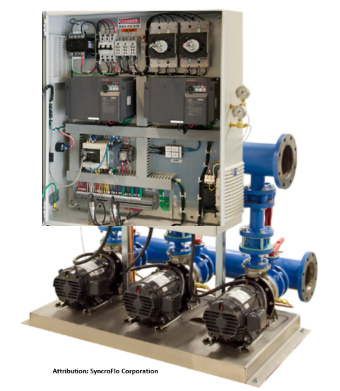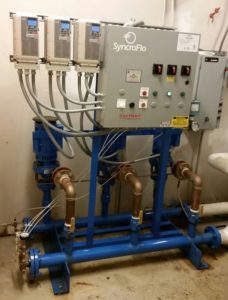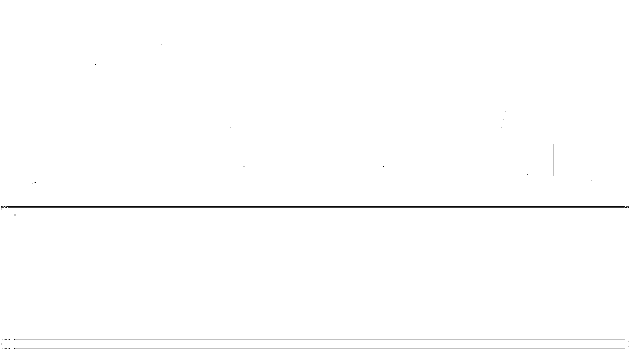What is a VFD Upgrade?
Older “constant speed” booster systems were offered using pressure regulating valves (PRV) to provide a specific flow at a specific pressure. The booster pumps discharge was regulated by the valves. Pumping against a pressure regulating valve is a bit like driving with one foot on the gas pedal and the other foot on the brake pedal. It not only wastes energy, but causes premature wear and tear on the rotating equipment.
Modern booster systems use variable frequency drives (VFD) to match the motor speed to the flow and head required by the system. In this way the system uses only the energy needed to support the users. Gradual speed increases also reduce wear and tear on the pumps impellers and bearings.
Many manufacturers offer a “VFD” upgrade for their booster systems. A VFD upgrades consists of a replacement control panel with VFD’s, and adjustment or modification of the PRV’s to prevent the valves from interfering with the operation of the VFD’s. The motor drives are matched to the installed motors and the control panel is provided programmed to meet the system requirements. Additional sensors may also be installed if necessary.

What happens to the PRV?
The pressure regulating valves can be adjusted or modified to avoid interfering with the upgraded control panel and VFD. There are advantages and disadvantages for each approach.
Option #1 – Adjust the PRV’s to allow flow at 10-20 Psig below the minimum desired discharge pressure. The advantage is this allows the PRV to act as a check valve avoiding reverse flow. If the VFD fails, then the PRV could be re-adjusted to allow the control to operate the pumps manually at constant speed. The dis-advantage is the PRV’s will require maintenance periodically.
Option #2 – Remove the opening and closing speed controls from the PRV as well as the pressure regulating control to allow the PRV to open with flow, but prevent back flow. The advantage is less maintenance is required. The dis-advantage is rust can collect and clog the valve over time. Also the PRV cannot be re-engaged to allow the system to run manually.
Option #3 – Remove the PRV’s during the installation of the VFD’s. (Figure 2) Check valves must also be installed when choosing this option. The advantage is no additional maintenance is require. The dis-advantage is the pumps should not be run manually.

